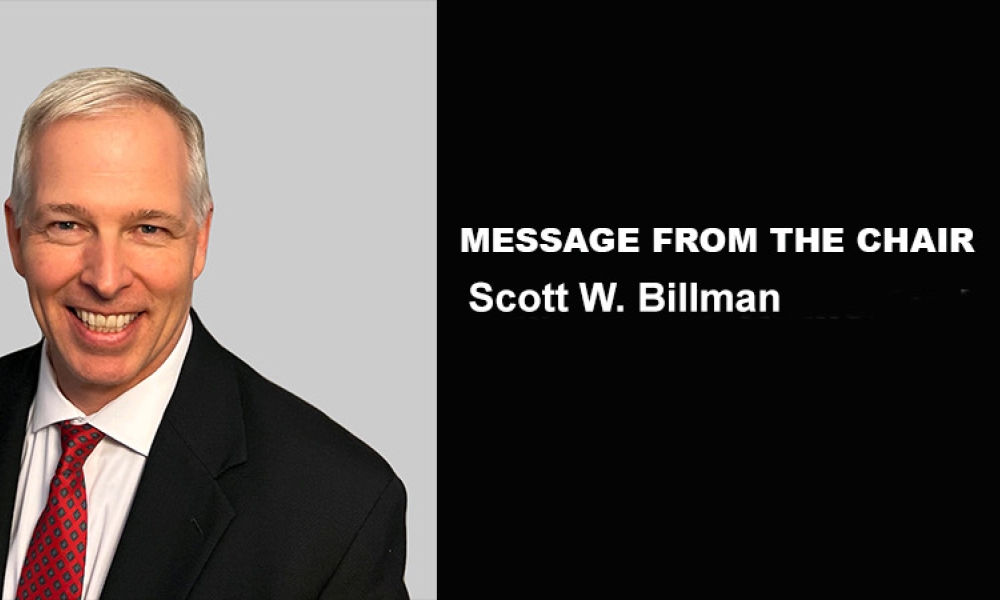2021 ISPE Biotechnology Conference & Workshop: Cell & Gene Therapies Star in Conference Keynotes

The 2021 ISPE Biotechnology Conference and Workshop began on 22 September with a series of keynote presentations on a range of topics related to cell and gene therapies and advanced therapy medicinal products (ATMPs). Presenters included regulators and individuals whose organizations worked on developing vaccines for COVID-19. The virtual conference spanned three days.
Here are highlights from opening day keynote presentations:
Rapid Growth of INDs
Wilson W. Bryan, MD, Director, Office of Tissues and Advanced Therapies (OTAT), CBER/FDA, gave the first keynote, “Development of Cell and Gene Therapies During COVID-19 Pandemic.” He gave an overview of expanded recent development of cell and gene therapies and the investigational new drug (IND) applications to the US FDA that have increased in the last few years.
Bryan said that this is an exciting time for the development of cell and gene therapies: in 2016, 223 new INDs were received by the FDA; by 2020, that number rose to 666. He said that research INDs for gene therapy have increased, although those have somewhat plateaued between 2019 and 2020 (161 in 2019 and 160 in 2020; many of the previous increases occurred after 2006, when there were just 67 INDs).
Wilson said that the science of gene therapy is moving forward rapidly, building on the human genome project, development of new vectors like adeno-associated virus and lentivirus, genome editing such as clustered regularly interspaced short palindromic repeats (CRISPR), and even use of nano-particles. The use of chimeric antigen receptors T-cell therapy (CAR-T) has resulted in five CAR-T gene therapies approved to date by the FDA; a total of seven gene therapies have been approved.
Research INDs for cellular therapies have been on the rise, with a lot of activity in just the last few years: 91 in 2019 and 151 in 2020. He suggested that some cell therapies may have anti-inflammatory activity that may be relevant to addressing COVID-19, which could account for the rise in the applications during the pandemic. Six cellular therapies have been approved to date by the FDA; he pointed out that one, Stratagraft, was approved this year despite the pandemic.
Wilson emphasized that the FDA supports cell and gene therapies through its Breakthrough Designation (BTD) and Regenerative Medicine Advanced Therapies (RMAT). BTD, which began in 2012, has granted 37 applications in OTAT (about 31% of submissions). RMAT has granted 62, or about 35%, of submitted applications since its launch in 2017. FDA Guidances also support cell and gene therapy development, he said.
The pandemic has presented challenges such as study subjects’ hesitancy to travel to investigational sites and added expenses for trials when patients are not enrolled quickly or drop out because they cannot make study visits. There have also been gains such as the adaptation to telemedicine and wearable devices, which have become popular and essential to adapting clinical trials during the pandemic. Recruitment and enrollment for clinical trials is often done remotely now, including obtaining informed consent; more remote monitoring; and adjustments of endpoints by sponsors, on which the FDA is working closely with sponsors. The FDA has been less open to modifying clinical trial analysis in areas such as sample size/study duration and suggested the use of interim analysis, he said, due to the concern that stopping early or not having sufficient sample size could affect the amount of data available for interpretation, which in turn could affect achieving the study’s objective of advancing development. He did note that the FDA has been open to new approaches to imputing missing data, which is more of an issue due to the pandemic.
Regulatory Aspects for ATMPs
Francesco Cicirello, Director, Quality Assurance, Envelo Biosciences; Richard Denk, Senior Consultant, Aseptic Processing and Containment, SKAN AG; and Matthew J. H. Davis, Senior GMP Inspector, Therapeutic Goods Administration (TPG; Australia) discussed “Regulatory Aspects for ATMPs based on PIC/S Annex 2 2A and EU GMP Annex 1” in a question and answer format.
In response to a question about contamination control strategy, Cicirello noted that in considering the contamination control strategy in Annex 2 2A, ATMPs are not just one product but many different types of products such as CAR-T, vector, or mRNA vaccines. For all, contamination control needs methods to prevent contamination, which is mostly engineering and processing related.
For contamination control under Annex 1, Davis observed that in ATMPs, contamination control poses a significant risk, greater than for nonsterile products, and noted that control strategy has been addressed in both PIC/S and European GMPs. He said it is important to consider all routes to contamination in a process and how to manage and prevent it, as well as ensure that the overall control strategy is fully understood and communicated. While the term “contamination control strategy” may be a new one, he noted that manufacturers may have all of the controls in place—they simply need to bring these together and that contamination control is an output of risk management. Cicirello agreed that raising awareness and bringing elements together in a holistic way are key.
In response to a query about how to align discussions about use of barrier systems under Annex 2 2A and Annex 1, Cicirello reiterated that there is overlap. He suggested recognizing differences in the various types of ATMP products.
Vaccines and Monoclonal Antibodies
Rino Rappuoli, Chief Scientist and Head, External R&D, GSK Vaccines, gave an overview of virus development before and during COVID-19 in “Vaccines and Monoclonal Antibodies to Regain Our Freedom.” He observed that the pandemic shortened traditional timelines for discovery and development to just 10 months for the COVID-19 vaccines. While technologies were already available to support this development, a large investment by the public sector helped to move the vaccines forward.
Electronic Batch Records in Cell Therapy
Jessica Beyer, Director, Cell Therapy Manufacturing, Bristol Myers Squibb (BMS), presented on “Implementation of Electronic Batch Records in Cell Therapy.” BMS uses autologous process for cell therapy; this process requires scale-out. Electronic batch records (EBRs) can help with the speed needed for these processes, she explained.
EBR is an electronic system that provides proof of successful execution of a production process. EBR interacts with other systems such as equipment tracking and use, inventory management and use, sample management systems, standard operating procedures, and quality systems.
A manufacturing execution system (MES) is an information system that drives the execution of manufacturing operations and generation of an EBR. EBR and MES are two of the key computerized systems used for GMP cell therapy operations; others are global patient services (used for apheresis site approval, patient enrollment, and other steps in the process) and laboratory information management system (LIMS) (used for sample inventory management, sample chain of identity [COI] and chain of custody, and other steps).
The pandemic has brought gains such as the adaptation to telemedicine and wearable devices, which have become popular and essential to adapting clinical trials during the pandemic.
EBR is important throughout the process for inventory controls, order creation, COI-based lot numbers assignment, manufacturing order trigger in MES, and other elements. MES helps with scheduling (including ensuring material is available, among other benefits); manufacturing (helps eliminate errors or missed documentation, among other benefits); data integrity (enforces good documentation practices and all elements of ALCOA principles); and disposition (batch record review is done as review by exception, which significantly reduces batch review time).
Beyer noted that electronic records are almost required for cell therapy due to the quick turnarounds necessary to produce those therapies. In summary, MES offers benefits in cell therapy over paper records: MES guides the operator in a very manual process; makes appropriate procedures readily available; maintains chain of identity; limits rework or delays; drives compliance in execution; supports analytical data in a proactive way; reduces variability; increases probability of success; and supports review by exceptions, which enables a faster release process without compromising compliance.
CMC and Accelerated Development

Carolyn Laurencot, Associate Director for Regulatory Science and Review, Division of Cellular and Gene Therapies, Office of Tissues and Advanced Therapies, FDA Center for Biologics Evaluation and Research, FDA, presented on “Cellular and Gene Therapy Products: a CMC Regulatory Perspective,” outlining some CMC issues with accelerated development.
These include: promising clinical results and accelerated clinical studies can give less time for product development; assay development can lag behind clinical studies; requirements for licensure are unchanged; stability studies challenges include initiating stability studies earlier, while needing potency assay for stability, and there can be potential issues if manufacturing or testing issues change; and planning early for biologics license application (BLA) and commercialization.
She listed CMC information that should be in an IND, including information that describes the composition, manufacture, and control of the investigational product; information should be sufficient to assure identity, quality, purity, and potency of the product; the amount of information submitted will depend on the phase and scope of the initial clinical investigation; and as development proceeds, supplemental CMC information will be needed as appropriate to address expanded phase and scope of clinical investigations.
In summary, the number of CGT products being evaluated clinically has reached an all-time high; CGT products are complex biologics requiring significant forethought regarding product development, especially those in accelerated development; concurrent CMC development during clinical development of the product is crucial and FDA advice should be sought; significant investment of effort into understanding product attributes and analytical testing at all phases of clinical studies is crucial; product and process characterization and assay development should be started early and continued through the product life cycle; process and analytical testing changes are expected during the life cycle of a CGT product, so plan ahead, and try to resolve potential preclinical and CMC issues early in product development.
BioNTech and mRNA Vaccine Development
Oliver Hennig, Senior Vice President Operations, BioNTech SE, gave an overview about the development process for the Pfizer-BioNTech COVID-19 vac-cine and other mRNAs in “BioNTech’s Road to One Billion Doses of mRNA Vaccines.” BioNTech’s collaborations include work with Pfizer, University of Pennsylvania, Gates Foundation, and others on various initiatives including seasonal flu, infectious disease indications, HIV and tuberculosis, and rare diseases.
Hennig talked about why mRNA is good for vaccines: It does not require the addition of adjuvants or use of a viral vector for administration; it offers highly scalable production; it is high purity and animal free; and it is nonintegrating into DNA and noninfectious, unlike attenuated live virus and DNA-based virus.
In addition, mRNA offers a highly individualized approach to oncology targets, and he described the process for using mRNA for those applications, where blood/tumor cells from the patient are used; for the vaccine, the genetic code of the virus is used.
Oxford and Adenovirus-Vectored COVID-19 Vaccine
Sandy Douglas, Academic Clinician at the Jenner Institute, University of Oxford, who led their team in working on COVID-19 vaccine development, gave an overview of the development and the partnership with AstraZeneca in “Manufacturing an Adenovirus-Vectored COVID-19 Vaccine: From Bench to Millions of Doses in Months.” He traced the development in the early months at Oxford of large-scale process and multi-site international manufacturing strategy early in 2020 before joining forces in May 2020 with AstraZeneca.
Douglas gave some background on adenovirus vector basics, noting that prior to COVID-19, the Oxford platform had been used for other vaccines development and demonstrated consistent safety and immunogenicity in phase I and II clinical trials. Adenovirus vector’s benefits include “plug and play” versatility because there is no need for tailor-made processes for each vaccine.
Prior to the pandemic, Douglas’s group was not in a position to do large-scale manufacturing, but in February 2020 the group thought that it was possible that their academic group could help with developing a vaccine for COVID-19. There was a platform and clinical trial capacity, but they could only make about 1,500 doses, where there was a need for more than 1.5 billion doses.
The group needed to increase productivity and both scale up and out. Productivity was increased to a new fed-batch upstream, scale-up went from 30mL to more than 1000L in months, and scale-out included collaborating with multiple partners. They also needed to very quickly supply for phase III.
In late February 2020, the group switched to a continuous phase I/II/III strategy, going from first human recipient in late April 2020 to more than 1,000 recipients in May 2020. They switched to a “just in time” supply of multiple trial batches, and developed a proposal for rapid scale-up of fed-batch process to 200L.
Collaboration came initially from a Dutch CMO/supplier consortium in the UK and the Netherlands, and some funding came through the UK government for the 200L engineering run. Scale up moved quickly: in March 2020 to 50L, and April 2020 to 200L. Partners in India and China were added, initiating a goal of 1000L scale. Coordination and communication were key at this stage, he noted. By April, the group obtained more funding from the UK government and was able to scale up to 200L by May, which was when AstraZeneca joined the initiative.
The process development summary from his presentation: antigen-repressing cell bank/promoter combination; single-use materials and common unit operations throughout; innovations of two-cycle low MOI USP and direct loading of clarified lysate on AEX in DSP; product quality in line with precedent and regulatory expectations. When ready for 1000–4000L production, they used parallel tracking tech transfer for speed and distributed manufacturing with central coordination.
Disclaimer: This is brief and informal synopsis of presentations by regulators during a conference presented by ISPE in September 2021. The content of this article has not been vetted by any regulatory agency and does not represent official guidance or policy of any agency.









